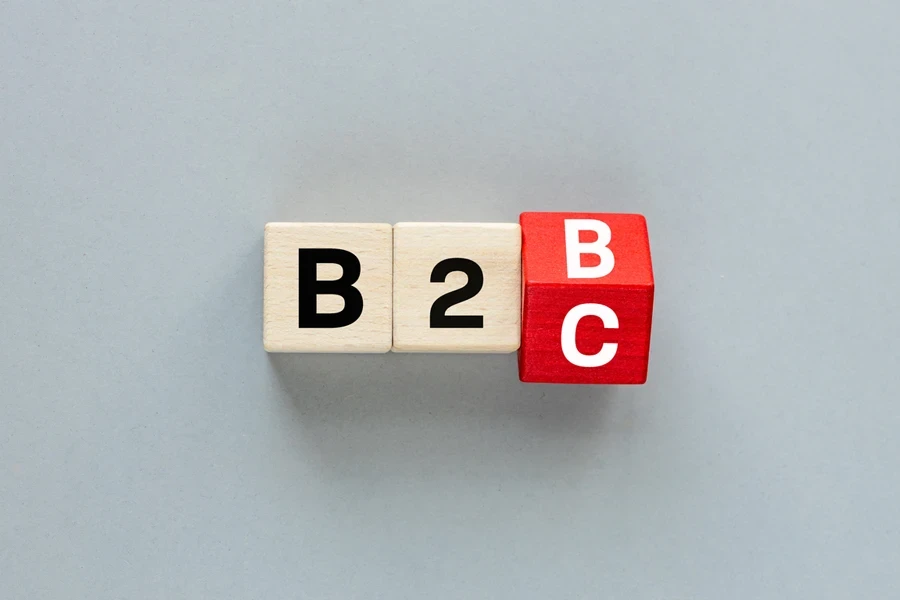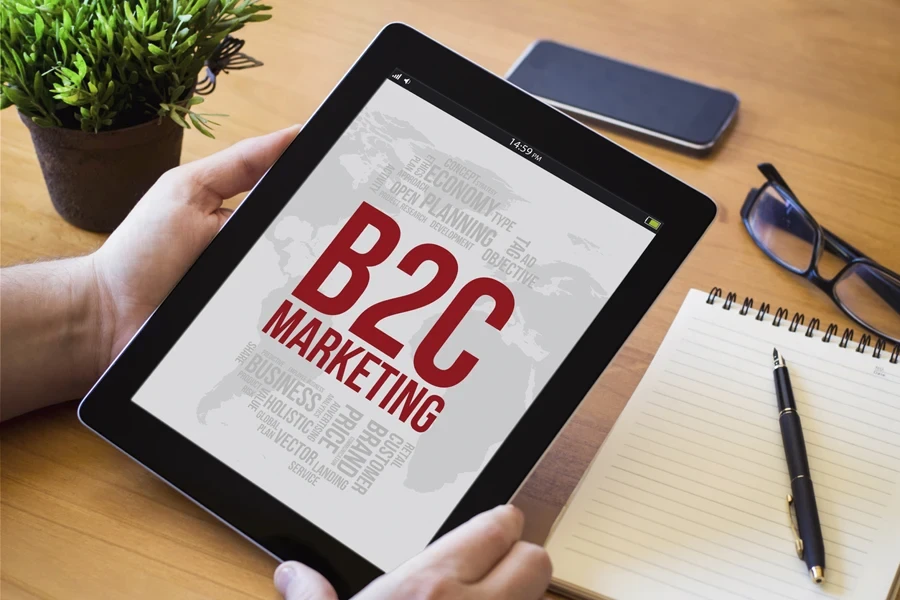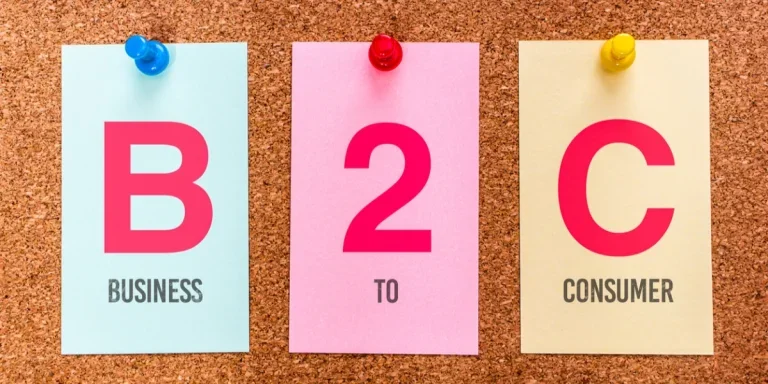If you’re starting a business and exploring ways to sell products, you’ve likely come across the term B2C. But what does it mean, and how can it shape your approach to building a successful business?
Here, we will not only explain the definition of B2C but also provide you with everything you need to know about this business model so you can make the best decisions as a new business owner. Whether you’re planning to open an online store, launch a local brick-and-mortar shop, or are exploring dropshipping, understanding how B2C functions is essential.
Table of Contents
What does B2C mean?
How does B2C differ from B2B?
Examples of successful B2C businesses
Why B2C is popular with new business owners
Key factors for B2C success
Choosing the right products
Building a strong brand
Pricing for profitability
Creating a smooth buying experience
B2C marketing strategies
B2C trends to watch
Is B2C right for you?
What does B2C mean?
B2C stands for business-to-consumer. It refers to a business model where businesses sell products or services directly to individual customers who are the end users. Common B2C businesses include:
- Online retailers (e.g., Amazon, Etsy stores, Shopify shops)
- Local shops and boutiques
- Restaurants and cafes
- Subscription services like Netflix or meal kits
If your goal is to sell directly to consumers, you’re operating a B2C business.
How does B2C differ from B2B?

You may have also heard the term B2B (business-to-business). While B2C companies focus on selling to individual customers, B2B businesses focus on selling to other businesses. For example:
- A clothing store that sells T-shirts to individual customers is a B2C business.
- A company that sells wholesale T-shirts to corporate clients is a B2B business.
Understanding this distinction between these two business models is important when deciding how to market your products and who your target audience should be.
Examples of successful B2C businesses
Many well-known brands started as small B2C businesses and grew by focusing on customer needs and smart marketing. Examples include:
- Gymshark, a fitness clothing brand that gained a global following by selling directly to gym enthusiasts online.
- MVMT Watches, which sourced stylish watches affordably and used social media marketing to attract millennials.
Both companies kept costs low by sourcing products strategically while building strong customer relationships.
Why B2C is popular with new business owners
Starting a B2C business is appealing for several reasons:
- Lower startup costs: Many B2C businesses, especially online stores, can launch with minimal investment. This is great for small businesses.
- Wider customer base: Selling to individual consumers allows you to reach thousands, or even millions, of potential buyers.
- Flexible sales channels: From Shopify to Facebook Marketplace, there are numerous ways to sell your products.
Key factors for B2C success

Running a successful B2C business requires careful planning. Consider these key factors:
Choosing the right products
Selecting products that resonate with your target audience is foundational to B2C success. Consider the following steps:
- Market research: Analyze current market trends to identify products in high demand. Utilize tools like Google Trends and social media platforms to gauge consumer interest.
- Competitive analysis: Study competitors to understand what products are performing well and identify potential gaps in the market.
- Customer feedback: Engage with potential customers through surveys or focus groups to gather insights on their preferences and needs.
For a deeper understanding of product selection strategies, consider reading this article on how to choose a winning product on Amazon.
Research trending items in your niche. Popular B2C categories include:
- Electronics and accessories
- Fitness and wellness gear
- Home organization products
- Beauty and skincare items
- Pet products
Building a strong brand
Since B2C markets are often competitive, branding helps you stand out. A compelling brand identity differentiates your business, builds brand awareness, and fosters customer loyalty. Key elements include:
- Brand story: Craft a narrative that communicates your mission, values, and the unique value proposition of your products.
- Visual identity: Develop consistent branding elements such as logos, color schemes, and typography that reflect your brand’s personality.
- Voice and tone: Establish a consistent voice in all communications that resonates with your target audience.
To explore effective branding techniques, this guide on building a brand offers valuable insights.
Pricing for profitability
B2C pricing should consider production costs, marketing expenses, and customer expectations. Competitive pricing can help attract new customers, while premium pricing may suit specialized products.
Here are a few things to consider when it comes to developing a pricing strategy:
- Cost analysis: Calculate all expenses, including production, marketing, and distribution, to determine the minimum viable price.
- Market positioning: Align your pricing strategy with your brand’s positioning—premium brands may command higher prices, while value brands compete on affordability.
- Psychological pricing: Implement pricing tactics like $9.99 instead of $10.00 to appeal to consumer psychology.
This guide on pricing strategy can help you to choose the best pricing strategy for your business.
Creating a smooth buying experience
An intuitive and enjoyable purchasing process enhances customer satisfaction and encourages repeat business. Ensure your website or storefront is easy to navigate, offers secure payment options, and provides clear product information.
- Website usability: Ensure your website is user-friendly, with clear navigation, fast load times, and mobile responsiveness.
- Secure transactions: Implement robust security measures to protect customer data and build trust.
- Customer support: Offer accessible customer service channels to assist with inquiries and resolve issues promptly.
To improve your customers’ buying experience, consider the strategies outlined in this piece on enhancing customer experience. It’s also important to know the difference between customer experience management and customer relationship management; learn more here.
B2C marketing strategies

Effective marketing is crucial in B2C sales, and a multifaceted approach is critical. Here are some proven digital marketing strategies:
- Content marketing: Create valuable content that educates and entertains your audience, establishing your brand as an authority in your niche. One way to do this is on a business blog.
- Leverage social media: Platforms like Instagram, TikTok, and Facebook allow you to promote products, engage with followers, and build brand loyalty.
- Email marketing campaigns: Develop personalized email campaigns to nurture leads and keep customers informed about promotions and new products.
- Use influencer marketing: Partnering with influencers can expand your reach and improve credibility.
- Offer promotions and discounts: Flash sales, discounts, or free shipping can encourage impulse buying.
- Create strong product listings: Clear descriptions, quality images, and customer reviews improve your chances of converting browsers into buyers.
B2C trends to watch
Consumer habits are constantly evolving, and successful B2C businesses stay ahead of trends. Some current trends include:
- Sustainability: Eco-friendly products are gaining popularity as consumers become more environmentally conscious.
- Personalization: Tailoring product recommendations and marketing messages to individual preferences can boost sales.
- Mobile shopping: Optimizing your website for mobile users is essential as smartphone shopping continues to grow.
Is B2C right for you?
B2C businesses are a great choice for entrepreneurs looking to start small, scale quickly, and connect directly with consumers. By choosing the right products, building a strong brand, and using smart marketing strategies, you can create a thriving B2C business.
If you’re looking for reliable suppliers to support your B2C business, platforms like Alibaba.com offer a wide range of products to explore. With proper research and planning, you can find great deals and trusted vendors to support your growing business.




